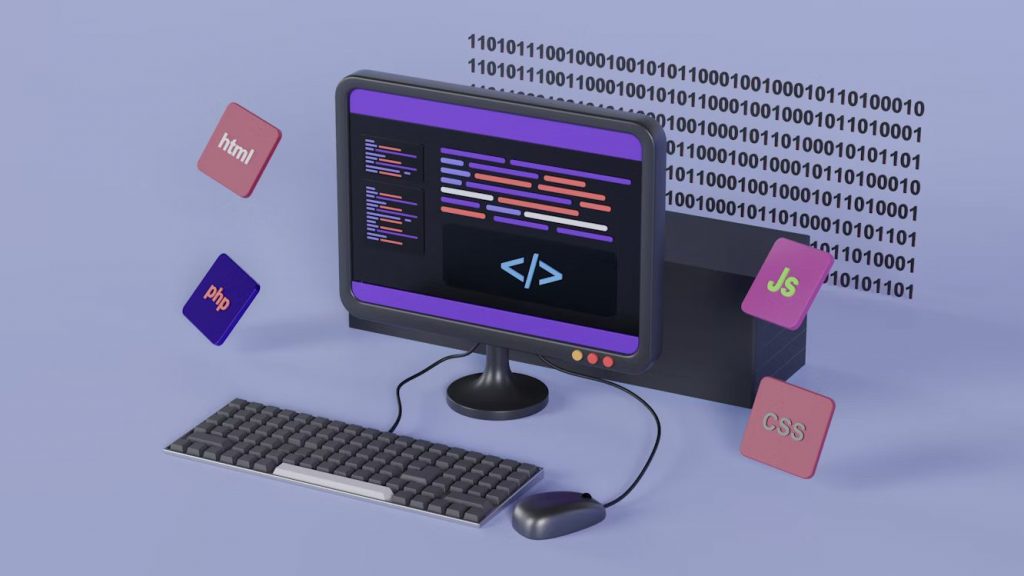صياغة التميز في البرمجيات
دعنا نبني شيئاً استثنائياً معاً.
اعتمد على شركة Lasting Dynamics للحصول على جودة برمجيات لا مثيل لها.
لويس لامبرت
يوليو 08, 2025 - 8 دقائق للقراءة

في عام 2025، أصبحت الحاجة إلى خفض تكاليف تطوير البرمجيات أكثر إلحاحاً من أي وقت مضى بالنسبة للشركات في الولايات المتحدة الأمريكية. فقد جعلت موجة التحول الرقمي وارتفاع رواتب المطورين وحالة عدم اليقين الاقتصادي من تحسين التكاليف أولوية قصوى لقادة تكنولوجيا المعلومات. تبحث الشركات عن طرق مبتكرة لخفض تكاليف التطوير، وخفض نفقات المطورين، وتوفير ميزانيات تكنولوجيا المعلومات دون التضحية بالجودة أو السرعة.
مع تطور صناعة البرمجيات، فإن فهم كيفية تقليل نفقات تطوير البرمجيات ليس مجرد مسألة بقاء، بل هو ميزة تنافسية. دعونا نستكشف بعضاً من أحدث الاتجاهات والمنهجيات المثبتة ودراسات الحالة الواقعيةيوضح كيف تساعد Lasting Dynamics المؤسسات على تحقيق وفورات مستدامة في التكاليف في تطوير البرمجيات من خلال إيجاد أفضل الحلول لكلا الجزأين.

تتطلب البرمجة الكثير من الجهد، وإيجاد أفضل الحلول وأسرعها هو المفتاح. الصورة لكريستينا موريللو على Pexels: https://www.pexels.com/photo/close-up-photo-of-person-typing-on-laptop-1181675/
قبل أن تتمكن من خفض تكاليف تطوير البرمجيات، عليك أن تفهم أين تذهب الأموال بالفعل، وهي أكثر من مجرد رواتب. في عام 2025، من المتوقع أن يصل الإنفاق العالمي على تكنولوجيا المعلومات إلى $5.61 تريليون تيرابايت (بزيادة قدرها 9.81 تيرابايت و25 تيرابايت عن عام 2024)وجزء كبير من ذلك يذهب مباشرة إلى تطوير البرمجيات. وفي الولايات المتحدة، عادةً ما يقوم المطورون من المستوى المتوسط بما يلي اكسب ما بين $50 و$60 في الساعة.
لا تتعلق هذه المعدلات بكتابة الأكواد البرمجية فحسب، بل تعكس المنافسة الشرسة على المهارات المتخصصة والتعقيد المتزايد لمشاريع البرمجيات الحديثة. إن نطاق الرواتب الواسع والمعدلات المرتفعة مدفوعة بالمنافسة على المواهب، خاصة في المجالات ذات الطلب المرتفع مثل الذكاء الاصطناعي والسحابة والأمن السيبراني. لكن الرواتب هي مجرد البداية، عليك أيضًا مراعاة عدة عوامل:
وتتجاوز التكلفة الحقيقية لتوظيف مطور البرامج مجرد راتبه الأساسي، حيث يجب على الشركات أن تأخذ في الحسبان أيضاً النفقات الإضافية مثل الفوائد والمعدات والنفقات العامة الأخرى. يمكن أن تختلف تكاليف المشروع بشكل كبير حسب التعقيد والنطاق، فبينما قد تتطلب المشاريع الصغيرة استثمارًا متواضعًا، فإن الأنظمة الأكبر على مستوى المؤسسة غالبًا ما تتطلب موارد أكثر بكثير.
في ظل التضخم المستمر والوتيرة السريعة للتغير التكنولوجي، تصبح إدارة ميزانيات البرمجيات صعبة بشكل متزايد. فالمؤسسات التي تجد طرقًا لتحسين إنفاقها دون التضحية بالجودة أو الابتكار هي التي تحافظ على ميزة تنافسية. وفي الوقت نفسه، فإن المؤسسات التي لا تتكيف مع الوضع الحالي تخاطر بأن يتفوق عليها منافسون أكثر مرونة وكفاءة.
عدة عوامل دفع التكلفة العالية لتطوير البرمجيات في الولايات المتحدة الأمريكية. أولاً وقبل كل شيء النقص المستمر في المطورين المهرة، مما أدى إلى زيادة مطردة في الرواتب والمزايا. وقد أدى الطلب على الخبرة في التقنيات الناشئة مثل الذكاء الاصطناعي والبلوك تشين والحوسبة السحابية إلى تفاقم هذا الاتجاه.
أصبحت مشاريع البرمجيات اليوم أكثر تعقيداً بكثير مما كانت عليه قبل بضع سنوات فقط. فالشركات الآن تتوقع أن تكون منتجاتها الرقمية آمنة وقابلة للتطوير وسريعة ومتكاملة بعمق في أنظمة أوسع. وهذا التعقيد يعني المزيد من الساعات والمهارات المتخصصة والمزيد من الأيدي العاملة، ليس فقط من أجل التطوير، ولكن أيضاً من أجل التخطيط والتصميم والاختبار والنشر والصيانة طويلة الأجل. الترميز هو ربما يكون الجزء الأغلى ثمناًلأن المطورين بحاجة إلى جعل البرنامج يعمل وهذا يتطلب الكثير من الجهد. أما الباقي فهو مرتبط بالعمل المحيط الذي لا يقل أهمية.
بالإضافة إلى ذلك، غالبًا ما تواجه الشركات تكاليف خفية تتعلق بالديون التقنية والعمليات غير الفعالة وزحف النطاق. يمكن أن تؤدي الديون التقنية الناتجة عن التعليمات البرمجية المتسرعة أو دون المستوى الأمثل إلى ارتفاع تكاليف الصيانة وإعادة العمل المكلفة في المستقبل. كما أن الزحف على النطاق، أو التوسع غير المنضبط لمتطلبات المشروع، هو مشكلة شائعة أخرى يمكن أن تؤدي إلى تضخيم الميزانيات بسرعة وتأخير التسليم.
ولتخفيض تكاليف تطوير البرمجيات بشكل فعال، يجب على المؤسسات معالجة هذه الدوافع الأساسية من خلال التخطيط الاستراتيجي وتحسين العمليات واعتماد التقنيات الحديثة.

التخطيط الاستراتيجي والتنظيم الجيد يمكن أن يقلل من تكاليف تطوير البرمجيات. صورة لوكاس على Pexels: https://www.pexels.com/photo/person-encoding-in-laptop-574071/
دعنا نبني شيئاً استثنائياً معاً.
اعتمد على شركة Lasting Dynamics للحصول على جودة برمجيات لا مثيل لها.
إحدى أكثر الاستراتيجيات فعالية لتقليل تكاليف تطوير البرمجيات هي الاستعانة بمصادر خارجية أو توظيف فرق عمل عن بُعد. من خلال الاستفادة من تجمعات المواهب العالمية، يمكن للشركات الوصول إلى مطورين ذوي جودة عالية بجزء بسيط من تكلفة التوظيف محلياً. هناك طرق مختلفة للتعامل مع الاستعانة بمصادر خارجية. الاستعانة بمصادر خارجية قريبة تعني العمل مع فرق في البلدان المجاورة، والتي يمكن أن توفر مواءمة أفضل للمناطق الزمنية وأوجه التشابه الثقافي. وغالباً ما يحقق العمل مع فرق العمل في الخارج مع فرق عمل في أماكن أبعد أكبر توفيراً في التكاليف. وقد شهدت العديد من الشركات الأمريكية نجاحاً في الشراكة مع فرق في بلدان مثل الهند والفلبين وبولندا وأوكرانيا.
أصبح العمل عن بُعد، الذي كان يعتبر اختيارياً في السابق، جزءاً أساسياً من عالم التكنولوجيا. فقد ساعد ذلك الشركات على بناء فرق عمل موزعة مع توفير النفقات العامة مثل المساحات المكتبية والمعدات. في الواقع، سرّعت الجائحة من هذا التحول، وفي عام 2025، لا يزال التطوير عن بُعد وسيلة قوية لتوفير المال واكتساب المرونة.
ومع ذلك، فإن الاستعانة بمصادر خارجية ناجحة تتطلب الاختيار الدقيق للبائعين، والتواصل الواضح، والإدارة القوية للمشروعات. يجب على الشركات التأكد من امتلاك فرق العمل عن بُعد للمهارات والخبرات اللازمة والملاءمة الثقافية لتقديم نتائج عالية الجودة. Lasting Dynamics، على سبيل المثال, ساعدت العملاء تحقيق وفورات كبيرة في التكاليف من خلال الاستعانة بمصادر خارجية استراتيجية، مع الحفاظ على معايير الجودة الصارمة والتواصل الشفاف.
إذا كنت تحاول بناء برمجيات رائعة دون الإفراط في الإنفاق، فإن التطوير الرشيق هو أحد أفضل الطرق لتحقيق ذلك. على عكس أساليب إدارة المشاريع التقليدية التي تعتمد على التخطيط المسبق الصارم، فإن التطوير الرشيق يعتمد على المرونة والتعاون وتقديم القيمة مبكرًا وفي كثير من الأحيان. تُحدث هذه العقلية فرقاً كبيراً عندما تحاول الحفاظ على الكفاءة والالتزام بالميزانية.
تعمل أطر العمل الرشيقة مثل Scrum وKanban على تقسيم المشاريع إلى أجزاء أصغر حجمًا تسمى سباقات السرعة. تتيح هذه السباقات للفرق شحن الميزات القابلة للاستخدام بشكل متكرر، وجمع الملاحظات بشكل أسرع، وتعديل المسار حسب الحاجة. إنها طريقة أكثر ذكاءً لتجنب إضاعة الوقت على ميزات لا يريدها المستخدمون أو الأسوأ من ذلك، إعادة كتابة أقسام كاملة من المنتج لأن أحداً لم يكتشف مشكلة إلا بعد فوات الأوان.
كما أن الرشيقة تبني الشفافية في العملية. يعرف الجميع ما يحدث، وما هي الخطوة التالية، وأين يمكن أن تكون العوائق. وهذا يجعل من السهل تصحيح المسار وحل المشكلات قبل أن تخرج عن السيطرة. تُظهر الدراسات باستمرار أن فرق العمل الرشيقة تُنجز بشكل أسرع، مع رضا أعلى من العملاء والمستخدمين على حد سواء، وغالبًا ما يكون ذلك بتكاليف أقل.
خذ سبوتيفاي على سبيل المثال, أعادوا هيكلة فرقهم إلى فرق أصغر، "فرق رشيقة" لتبسيط التعاون والتحرك بشكل أسرع. والنتيجة؟ انخفاض النفقات العامة، وسرعة طرح الميزات، وجهد أقل بكثير من الجهد المهدر. في Lasting Dynamics, المنهجية الرشيقة هي جوهر طريقة عملنا مع العملاء. نحن نستخدمه للحفاظ على سير المشاريع، والحفاظ على تدفق الملاحظات، ومساعدة الشركات على توفير المال دون المساس بالجودة.

تساعد المنهجية الرشيقة على تقليل تكاليف تطوير البرمجيات. الصورة من ناتاليا فايتكيفيتش على Pexels: https://www.pexels.com/photo/income-tax-return-form-beside-black-eyeglasses-8927649/
توفر التقنيات مفتوحة المصدر وسيلة قوية لخفض نفقات المطورين وتقليل تكاليف تطوير البرمجيات. من خلال استخدام أطر عمل مثل React وAngular وDjango وNode.js وReact وAngular وDjango وNode.js، يمكن للشركات إلغاء رسوم الترخيص والاستفادة من الدعم المجتمعي القوي.
تعمل الأدوات مفتوحة المصدر على تسريع عملية تطوير البرمجيات من خلال توفير مكونات ومكتبات وعمليات تكامل مبنية مسبقًا. وهذا يقلل من الوقت والجهد اللازمين لبناء ميزات مشتركة من الصفر، مما يسمح للفرق بالتركيز على تقديم قيمة فريدة. بالإضافة إلى ذلك، فإن الحلول مفتوحة المصدر قابلة للتخصيص بشكل كبير وخالية من قيود البائعين، مما يوفر مرونة أكبر للتكيف مع متطلبات المشروع المتغيرة.
اعتمدت العديد من الشركات الرائدة، بما في ذلك GitHub، أدوات مفتوحة المصدر لتقليل التكاليف وتعزيز الابتكار. على سبيل المثال، يستخدم GitHub تقنيات مفتوحة المصدر مثل Git و Jenkins للتطوير والتعاون، مما يلغي رسوم الترخيص والاستفادة من التحسينات التي يقودها المجتمع.
عندما يتعلق الأمر بتوفير الوقت والمال في تطوير البرمجيات، فإن الأتمتة أمر لا يحتاج إلى تفكير. يمكن أن تستهلك المهام المتكررة مثل الاختبار والنشر والمراقبة ساعات من وقت المطورين الثمين. ولكن باستخدام الأدوات المناسبة ونهج DevOps القوي يمكن تبسيط هذه المهام أو حتى أتمتتها بالكامل، مما يتيح لفريقك التركيز على أعمال أكثر تأثيراً.
بدءاً من الفكرة إلى الإطلاق، نقوم بتصميم برامج قابلة للتطوير مصممة خصيصاً لتلبية احتياجات عملك.
شارك معنا لتسريع نموك.
يضمن الاختبار الآلي، على سبيل المثال، موثوقية التعليمات البرمجية الخاصة بك دون الحاجة إلى أن يقوم شخص ما بتشغيل كل ميزة يدويًا مرارًا وتكرارًا. أدوات مثل سيلينيوم وسايبرس وJUnit اختبار كل شيء بدءًا من وظائف الواجهة الخلفية إلى تدفقات المستخدم الأمامية على مدار الساعة طوال أيام الأسبوع، دون انقطاع، وبأخطاء أقل بكثير. وهذا لا يحسّن جودة البرمجيات فحسب، بل يقلل أيضًا بشكل كبير من مخاطر انزلاق الأخطاء إلى الإنتاج وتكلفة إصلاحها لاحقًا.
الوفورات الناتجة عن هذا النوع من الإعداد حقيقية. على سبيل المثال، استخدمت Microsoft أطر عمل الاختبار المؤتمتة لخفض تكاليف الاختبار اليدوي بنسبة 30%، مع تسريع دورة الإصدار بالكامل. هذه صفقة كبيرة عندما تقوم بالشحن على نطاق واسع.

الحوسبة السحابية طريقة رائعة لخفض تكلفة تطوير البرمجيات. صورة لبانوماس نيكومخاي على موقع بيكسلز: https://www.pexels.com/photo/close-up-photo-of-mining-rig-1148820/
كانت استضافة البنية التحتية الخاصة بك وصيانتها هي القاعدة. ولكن في عام 2025، أدركت معظم الشركات أن ذلك ليس فعالاً من حيث التكلفة ولا قابلاً للتطوير. لقد غيّرت الحوسبة السحابية اللعبة من خلال السماح للشركات باستئجار الكمية المحددة من قوة الحوسبة التي تحتاجها عندما تحتاج إليها والتوقف عن الدفع مقابل أي شيء لا تحتاج إليه.
منصات مثل AWS، وGoogle Cloud، وMicrosoft Azure تعمل على نموذج مرن للدفع حسب الاستخدام. هذا يعني أنه إذا احتاج تطبيقك إلى التعامل مع عدد أكبر من الزيارات يوم الاثنين وأقل يوم الثلاثاء، فستتم محاسبتك على الاستخدام الفعلي فقط. لا مزيد من الإفراط في توفير أجهزة باهظة الثمن لمجرد "الأمان". لا مزيد من صيانة الخوادم الضخمة التي تظل خاملة معظم الوقت. إنها فعالة وقابلة للتطوير ومناسبة للميزانية.
تتجاوز الفوائد مجرد التحكم في التكلفة. فالخدمات السحابية تجعل من الأسهل الانطلاق بسرعة، واختبار الأفكار الجديدة، والتوسع في أسواق جديدة دون القلق بشأن لوجستيات مراكز البيانات. كما أنها تأتي مزودة بأدوات مدمجة للأمان والنسخ الاحتياطية والمراقبة والتوسع، والتي قد تكون مكلفة للغاية وتستغرق وقتاً طويلاً لإدارتها بمفردك. علينا أيضًا أن نأخذ في الاعتبار أن العالم يتجه نحو مستقبل أكثر تكنولوجية، ويبدو أن السحابة هي تطور التخزين، خاصةً للشركات والمشاريع الكبيرة.
ومن الأمثلة البارزة على ذلك نتفليكس. من خلال نقل بنيتها التحتية إلى AWS، تمكنت Netflix من التوسع عالميًا والتعامل مع الارتفاعات الهائلة في حركة المرور, وخفض تكاليف البنية التحتية بنسبة 40-50% تقريبًا. إنها حالة نموذجية لكيفية توفير المرونة والتوفير على المدى الطويل من خلال السحابة، ولهذا السبب فإن ذلك يقلل من تكاليف تطوير البرمجيات لأن المعلومات القيمة الحقيقية هي فقط في تخزين الشركة وليس كل شيء (ليس كل شيء حيوي، ومن الأرخص استئجار مخزن من أجل بناء مساحة أكبر).
يتطلب خفض تكاليف تطوير البرمجيات في عام 2025 مزيجاً استراتيجياً من المنهجيات الحديثة والاستعانة الذكية بمصادر خارجية والأتمتة واعتماد السحابة. من خلال فهم الدوافع الحقيقية للتكلفة، والاستفادة من المواهب العالمية، وتبني حلول Agile و DevOps والحلول مفتوحة المصدر، يمكن للشركات تحقيق وفورات كبيرة مع الحفاظ على معايير عالية من الجودة والابتكار.
توفر الشراكة مع خبراء مثل Lasting Dynamics إمكانية الوصول إلى استراتيجيات مجربة وتقنيات متطورة وسجل حافل بالنجاح.
سواء كنت تتطلع إلى خفض تكاليف التطوير، أو خفض نفقات المطورين، أو توفير ميزانية تكنولوجيا المعلومات، فإن الطريق إلى خفض التكاليف بشكل مستدام يبدأ باتخاذ قرارات مستنيرة والالتزام بالتحسين المستمر.
هل أنت مستعد لتحويل عملية تطوير برمجياتك وتحقيق وفورات دائمة في التكاليف؟ 👉 للتواصل مع Lasting Dynamics اليوم للحصول على استشارة مجانية واكتشف كيف يمكن لخبرتنا أن تساعدك خبرتنا على ازدهار أعمالك في عام 2025 وما بعده.
تشمل الاستراتيجيات الأكثر فاعلية الاستعانة بمصادر خارجية أو شبه خارجية للتطوير، واعتماد منهجيات Agile و DevOps، والاستفادة من الأدوات مفتوحة المصدر، وأتمتة الاختبار والنشر، والانتقال إلى البنية التحتية القائمة على السحابة.
تتخصص شركة Lasting Dynamics في تحسين التكلفة من خلال ممارسات أجايل والأتمتة والحلول السحابية والوصول إلى مجموعات المواهب العالمية. ويشمل سجلهم الحافل مساعدة العملاء على تقليل نفقات تطوير البرمجيات.
نحن نصمم ونبني منتجات رقمية عالية الجودة ومميزة.
الموثوقية والأداء والابتكار في كل خطوة.
نعم، عند الشراكة مع شركات مرموقة مثل Lasting Dynamics، يمكن أن تكون الاستعانة بمصادر خارجية آمنة وموثوقة. فهي توفر إمكانية الوصول إلى محترفين مهرة، وإدارة قوية للمشروع، وتوفير كبير في التكاليف.
تسمح الحوسبة السحابية للشركات بتوسيع نطاق الموارد حسب الطلب، والدفع مقابل ما تستخدمه فقط، وإلغاء الحاجة إلى بنية تحتية محلية باهظة الثمن، مما يؤدي إلى توفير كبير في التكاليف.
إن إعطاء الأولوية لتوفير التكاليف على الجودة يمكن أن يؤدي إلى ديون تقنية وانخفاض جودة التعليمات البرمجية وارتفاع تكاليف الصيانة على المدى الطويل. من المهم تحقيق التوازن بين تحسين التكلفة والالتزام بالجودة والابتكار، ولهذا السبب فإن اختيار الشركة المناسبة للعمل معها أمر حيوي لتحقيق النجاح.
حوّل الأفكار الجريئة إلى تطبيقات قوية.
لنصنع معاً برمجيات تُحدث تأثيراً.
لويس لامبرت
أنا مصمم وسائط متعددة ومؤلف إعلانات ومحترف تسويق. أبحث بنشاط عن تحديات جديدة لتحدي مهاراتي والنمو مهنياً.